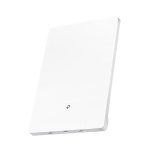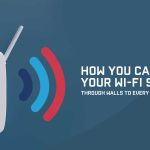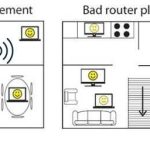A quick answer: an RSSI of 72 typically indicates a fair Wi-Fi or Bluetooth signal strength, meaning your device is receiving a decent but not optimal connection. It’s neither excellent nor too weak, so you might experience some minor connectivity issues depending on your usage.
An RSSI (Received Signal Strength Indicator) reading of 72 gives you a snapshot of the strength of your wireless signal. If you’ve ever wondered what that number really means for your device’s connectivity, you’re not alone. Understanding RSSI can help you troubleshoot connection problems or improve your network setup. Generally, a higher RSSI value signifies a stronger signal, leading to better speed and stability, while lower values suggest weaker signals that might cause lag or disconnections. Knowing what an RSSI reading of 72 indicates can help you determine whether your device has a reliable connection or if you need to make adjustments for better performance.
What does RSSI 72 mean?
Understanding RSSI: The Basics
RSSI stands for Received Signal Strength Indicator. It measures how strong the wireless signal is between a device and a wireless access point or router. Knowing RSSI helps understand the quality of your Wi-Fi connection. It is usually expressed as a numerical value, often in negative dBm units.
What Does a RSSI of 72 Signify?
An RSSI value of 72 indicates a specific level of signal strength. Generally, RSSI values range from around -30 dBm (excellent signal) to -100 dBm (very weak or unusable signal). However, some devices may display RSSI as a positive number, where higher values generally represent weaker signals. In contexts where 72 is used as a positive scale, a value of 72 typically suggests a decent connection but not the strongest.
Interpreting RSSI 72 in the Context of Signal Quality
A signal with RSSI 72 is usually considered moderate. It suggests that the device might experience occasional buffering or slower data transfer rates. For typical internet browsing and streaming, this level might be acceptable but not optimal for high-bandwidth activities. It is essential to understand your device’s specific RSSI measurement scale to interpret this number correctly.
How Does RSSI Relate to Wi-Fi Performance?
RSSI directly impacts Wi-Fi performance. When RSSI is high (closer to zero or a higher positive number, depending on the scale used), your device receives a stronger signal. Conversely, lower (or more negative) RSSI values mean weaker signals. Their relationship affects connection stability, download and upload speeds, and overall user experience.
Factors Affecting RSSI
Several factors influence the RSSI reading, including:
- Distance from the router or access point
- Physical obstructions like walls or furniture
- Interference from other electronic devices
- The quality of the Wi-Fi hardware
How to Measure and Check Your RSSI
Most smartphones, laptops, and Wi-Fi analyzers display RSSI values. You can check your device’s Wi-Fi settings or use dedicated apps to monitor signal strength. These tools help identify where signals are strongest or weakest, guiding you to improve your Wi-Fi setup.
The Importance of RSSI 72 in Real-World Use
When your device shows an RSSI of 72, it can handle most tasks but might struggle with high-demand activities like large file downloads or HD streaming. You may notice some buffering or slower page loading. Knowing this helps in troubleshooting connection issues or optimizing your Wi-Fi setup.
Improving Connection When RSSI Is Around 72
To enhance your Wi-Fi signal, consider:
- Moving closer to the router
- Reducing physical obstructions
- Switching to less congested Wi-Fi channels
- Upgrading your router or using Wi-Fi extenders
These steps can boost your signal strength, leading to better RSSI readings and improved internet performance.
RSSI and Device Compatibility
Different devices may display or interpret RSSI differently. Some measure in dBm, others use arbitrary scales. Be sure to understand your device’s measurement system for accurate readings. This helps compare signals across different hardware effectively.
Comparing RSSI Values: What Is Considered Good or Bad?
While the ideal RSSI varies by device, generally:
- RSSI above -50 dBm (or high positive value) indicates excellent signal
- Between -50 and -70 dBm (or medium value) shows good connection
- Below -70 dBm (or lower positive values) suggests weak signal
A reading of 72, depending on the scale, would typically fall into the moderate or acceptable range.
Related Topics: Signal-to-Noise Ratio and Connection Quality
While RSSI measures signal strength, the signal-to-noise ratio (SNR) indicates the clarity of the signal. A high SNR means less interference, leading to more stable connections. Both metrics together give a comprehensive view of network health.
Practical Tips for Managing RSSI 72
If your RSSI reads around 72 and you experience issues:
- Try repositioning your device or router for better alignment
- Remove sources of interference like cordless phones or microwaves
- Check for firmware updates for your router
- Utilize Wi-Fi mesh systems for better coverage
Understanding what RSSI 72 means provides valuable insight into your wireless connection. Whether you’re troubleshooting slow speeds or setting up your network, knowing how to interpret this value helps optimize your Wi-Fi. Remember, improving your signal strength leads to a more reliable and faster internet experience. Monitoring and adjusting based on RSSI ensures smoother browsing, streaming, and online activities.
Crazy RSI Indicator Tricks
Frequently Asked Questions
What factors influence RSSI readings like 72?
RSSI readings such as 72 can be affected by multiple factors including the distance from the Wi-Fi router, physical obstructions, interference from other electronic devices, and the quality of the wireless signal. Environmental conditions like walls, furniture, or even weather can also impact the signal strength, causing fluctuations in the RSSI value.
Is an RSSI of 72 considered suitable for stable Wi-Fi connections?
An RSSI of 72 typically indicates a moderate signal strength that can support stable Wi-Fi connections for most activities. However, for high-bandwidth tasks like streaming or gaming, stronger signals—closer to 50 or lower—may provide more consistent performance. Monitoring your environment and adjusting the placement of your device can help improve signal quality.
How can I improve an RSSI reading of 72 to achieve better connectivity?
To enhance an RSSI reading of 72, try moving closer to your Wi-Fi router or access point. Reduce physical barriers such as walls or furniture that block the signal. Additionally, minimize interference from other electronic devices operating on similar frequencies and consider upgrading your router or using Wi-Fi extenders to strengthen coverage in your space.
Final Thoughts
RSSI 72 indicates a strong wireless signal, ensuring reliable connection and data transfer. This value suggests you are close to the Wi-Fi source, reducing chances of interruptions.
A higher RSSI score, like 72, is ideal for seamless browsing, streaming, and online activities. It reflects good signal quality, even if it isn’t perfect.
What does RSSI 72 mean? It signifies a solid Wi-Fi connection with minimal issues, providing a smooth user experience.




